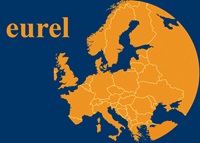After 2010, a new, specific political system emerged in Hungary, the nature of which is the subject of debate in political science. (“Illiberal democracy”, “autocracy”, “plebiscitary leader democracy” etc.) Whatever we want to call it, this regime, determined by one political party (Fidesz) and its charismatic leader (Prime Minister Viktor Orbán), defined itself since the early 2010s as a political system that proclaims the social doctrine of Christianity. There have been numerous studies on this regime's particular interpretation of Christianity. In this presentation, I would like 1. to summarize the basic features of the Christianity of this system and 2. compare it with the official so-called “Christian national ideology” of inter-war Hungary. (This period is an important reference point for the current Hungarian government in several respects, as shown, for example, by its narratives of memorial or historical policy.) An important feature of the “Christian national ideology” of the 1920s and 1930s was that it used Christianity primarily as a slogan or self-definition, distancing itself from Western Europe, which was seen as decadent, decaying and dying, and from liberalism. Another similarity is that Hungary has been and is seen as the “defender of Europe”, the true representative of Christian values, both in the past and in the present. Christianity was mentioned as an essential feature of the Hungarian national character, primarily to distinguish themselves from other political parties and ideologies. Another similarity is that the Hungarian state between the two world wars, like the current one, distinguishes between churches it likes and dislikes on the basis of political loyalty. Many of the religious denominations outside the so-called “historical” Christian (Roman Catholic, Calvinist and Lutheran) churches were suffered legal discrimination in the past, and similar trends we could observe in the process of state regulation of churches and denominations since 2010. The important difference, however, is that the Hungarian state between the two world wars consciously relied on these “historical” churches, while the current regime has developed much more of its “own” interpretation of Christianity. (E.g. it was happened that openly questioned the authority of the Pope.) Between the two world wars, the “alien” threat to Christianity was mainly identified in Jewry and modern culture, and has now been replaced by non-European migrants and the LMBTQ community – the government propaganda towards them has played a significant role in the stability and popularity of the system.

 PDF version
PDF version
